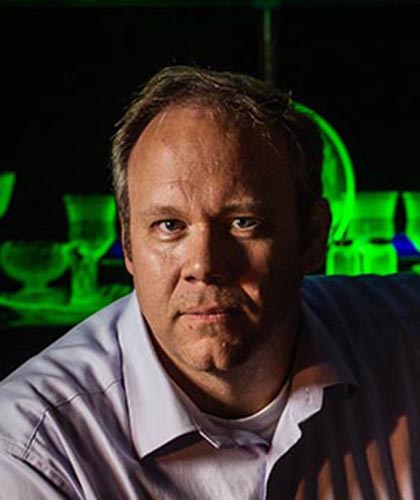
Koeth, Timothy W.
Former Director, UMD Nuclear Reactor & Radiation Facilities (2013 - 2019)
UMD Radiation Facilities Director of Research
Chair of UMD Radiation Safety Committee
Chair of UMD Reactor Safety Committee
National Museum of Nuclear Science & History Board of Trustees
Maryland Energy Innovation Institute
EDUCATION
- Ph.D., Physics, Rutgers University, 2009
- B.S., Physics, Rutgers University, 1997
HONORS AND AWARDS
- DARPA Young Faculty Award (YFA) Director's Fellowship Award 2024
- DARPA Young Faculty Award (YFA) 2022
- Board of Directors, National Museum of Nuclear Science & History (2020)
- Richard J. Plano Dissertation Award, Best Annual Rutgers Physics Ph.D. (April 2010)
RECOGNITION
• WIRED The Low-Stakes Race to Crack an Encrypted German U-Boat Message August 27, 2023
• NPR Morning Edition Interview, “Mystery of German Uranium Cube,” August 29, 2019
• Forbes, “The search for lost Nazi Uranium,” May 20, 2019
• Washington Post, “How Nazi Gzermany got a lot closer to building a nuclear weapon in WWII,” May 12, 2019
• Cosmos, “Physicists-turned-sleuths hunt for WWII German Uranium,” May 7, 2019
• ScienceNews, “How Scientists traced a uranium cube to Nazi Germany’s nuclear reactor program,” May 7, 2019
• DailyMail, “Hunt for Hitler’s missing Uranium,” May 7, 2019, featuring Timothy Koeth’s German uranium history of science project.
• Washington Post Magazine, “Accelerated Learning,” Sept 11, 2016
• Nuclear News “ ‘New’ Fuel for University of Maryland Research Reactor” June 2017
• Department of Energy's announcement of "UMD's New Used Fuel"
• Terp Magazine, “Beam Team,” May 16, 2017
• Physics Today, featured in BackScatter column, April, 2011
• symmetrybreaking article on the “Physics of Scotch Tape,” January 2011
• symmetry magazine article on the "DIY Cyclotron," August 2010, featured Small Cyclotron Conference
• Make Magazine article, April 2005, reporting on personally built cyclotron
• Physics Today "Building a Cyclotron on a Shoestring" November 2004, featured personally built cyclotron
My research interests cover a broad range of topics in the realm of radiation and nuclear science and technology, including the generation, detection, and manipulation of neutrons, charged particles, and EM radiations. My background is in intense electron and ion beam accelerators and their associated beam optics. I now apply these machines to novel energy storage materials and devices, materials development for and characterization of radiation hard devices and detectors, and high-power RF sources.
For a bit of fun, I have been tracking the average energy of the charged particles that I have worked along my career. This is similar to a "Livingston Plot," but mine is logrithmically descending with time... what happens if I extrapolate to absolute zero ?
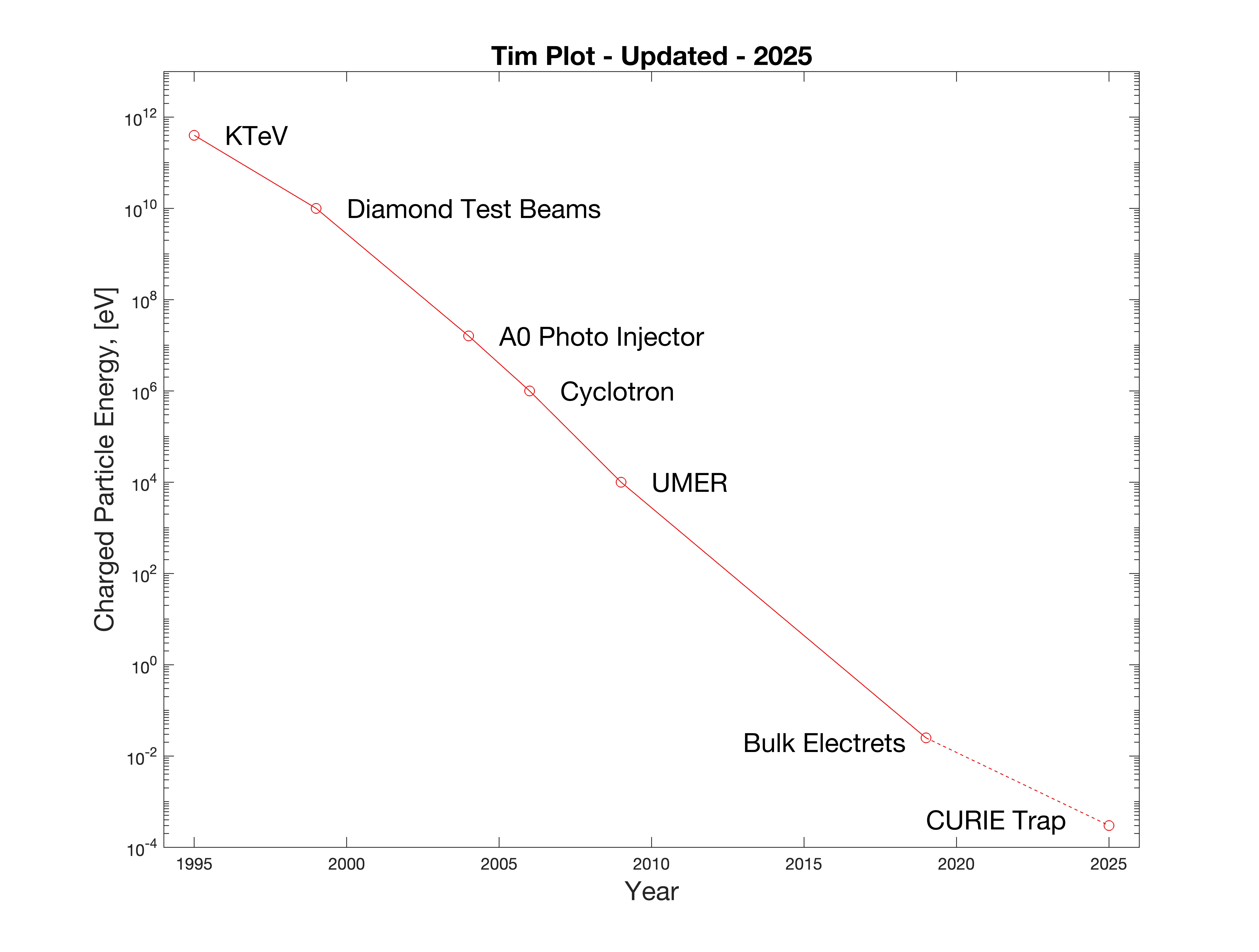
Tim Koeth's projects summary: By far, my group’s primary project over the past few years has been one that focuses on Charge Loaded Dielectrics, in which high energy electrons become embedded in insulating material, accumulate to the point where the internal electric field far exceeds the material’s breakdown strength. Upon initiating dielectric breakdown, the insulator quickly becomes a metallic like conductor. As a consequence, my group has brought extreme high speed photography, up to a frame rate of 1 billion frames per second, into the materials characterization tool box.
We are also working on radiation induced materials damage. This spans antique papers, electrical insulators, and state of the art detectors, specifically ones used in CERN’s Large Hadron Collider’s (LHC) Compact Muon Solenoid (CMS) heavy ion Spectator Reaction Plane Detector (SRPD), as we are able to emulate the same heavy ion induced electro-magnetic shower environment with UMD Radiation’s Faculties’ electron linear accelerator. I love neutrons! I have made neutrons in almost every way possible. Because of their electrical neutrality, they are an ideal tool for probing material at the smallest scale in bulk material, identifying fannishly trace quantities of metals, and non-destructively detecting the presence of, and quantifying hydrogen bearing compounds within bulk materials. The following are deeper dives into each of our current projects:
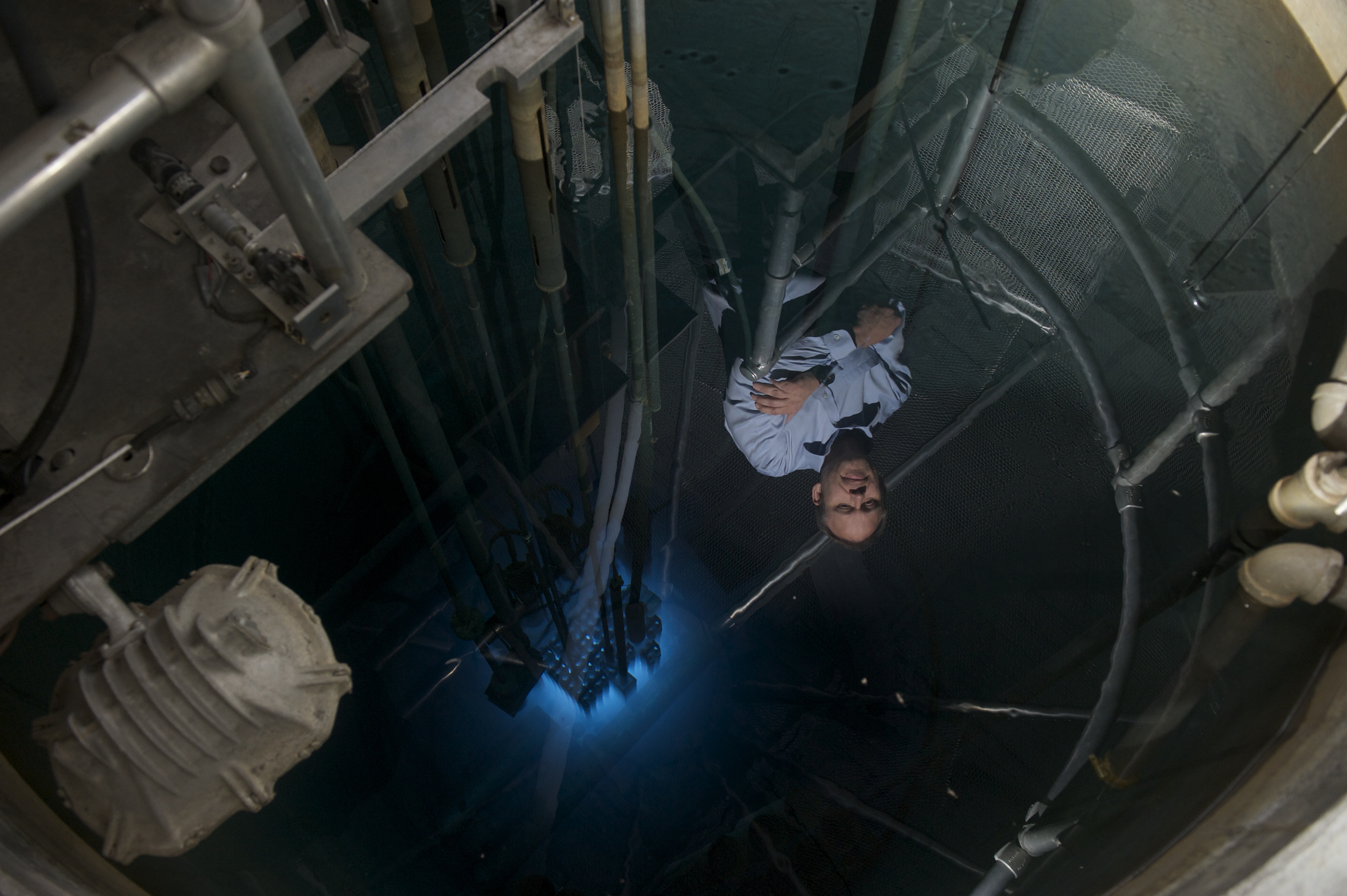
I. Charge Loaded Dielectrics. My group has been pioneering a new field in materials science, the fundamental study of Charge Loaded Dielectrics (CLD). By far my group’s primary project over the past few years has been in which high energy electrons become embedded in dielectrics and accumulate to the point where the internal electric field far exceeds dielectric breakdown, and the insulator quickly becomes a metallic like conductor.
In addition to making measurements and developing supporting theory, we have had to create a lot of the instrumentation necessary for our data collection which simply did not exist. We had to invent it, and then build it. Our accomplishments include the first ever video of space charge induced dielectric breakdown (SCIDB), which we recorded in two independent and different ways. During these measurement we discovered and subsequently imaged a new ultra-fast (>10,000,000 m/s) dielectric breakdown mode, which we have named Ivy Type. This was so remarkable that it has been featured in a Science article.
My group discovered why SCIDB happens in a front, like waves moving through the material, rather than diffusely, as little arcs and sparks all throughout the material. We have brought clarity and definition to my two-decade-long bizarre observation, and we have generated the first derivation of the "conductive layer" model of breakdown. This is impressive because it answers and predicts many otherwise unexplained phenomena. We have verified, with our sophisticated home-brew dynamic pulsed electroacoustic (PEA) for bulk materials system, the implanted electron charge distribution and the charges subsequent motion. The dynamic PEA is a nondestructive in-situ measurement to “image” embedded charge profile during loading in the linac, and subsequent migration after loading, and finally, the abrupt charge redistribution immediately upon breakdown. We have discovered that the discharge is not an expulsion of excess charge, but rather a dielectric breakdown that is governed by a minimizing of the internal stored energy resulting from a reconfiguration of the electric field.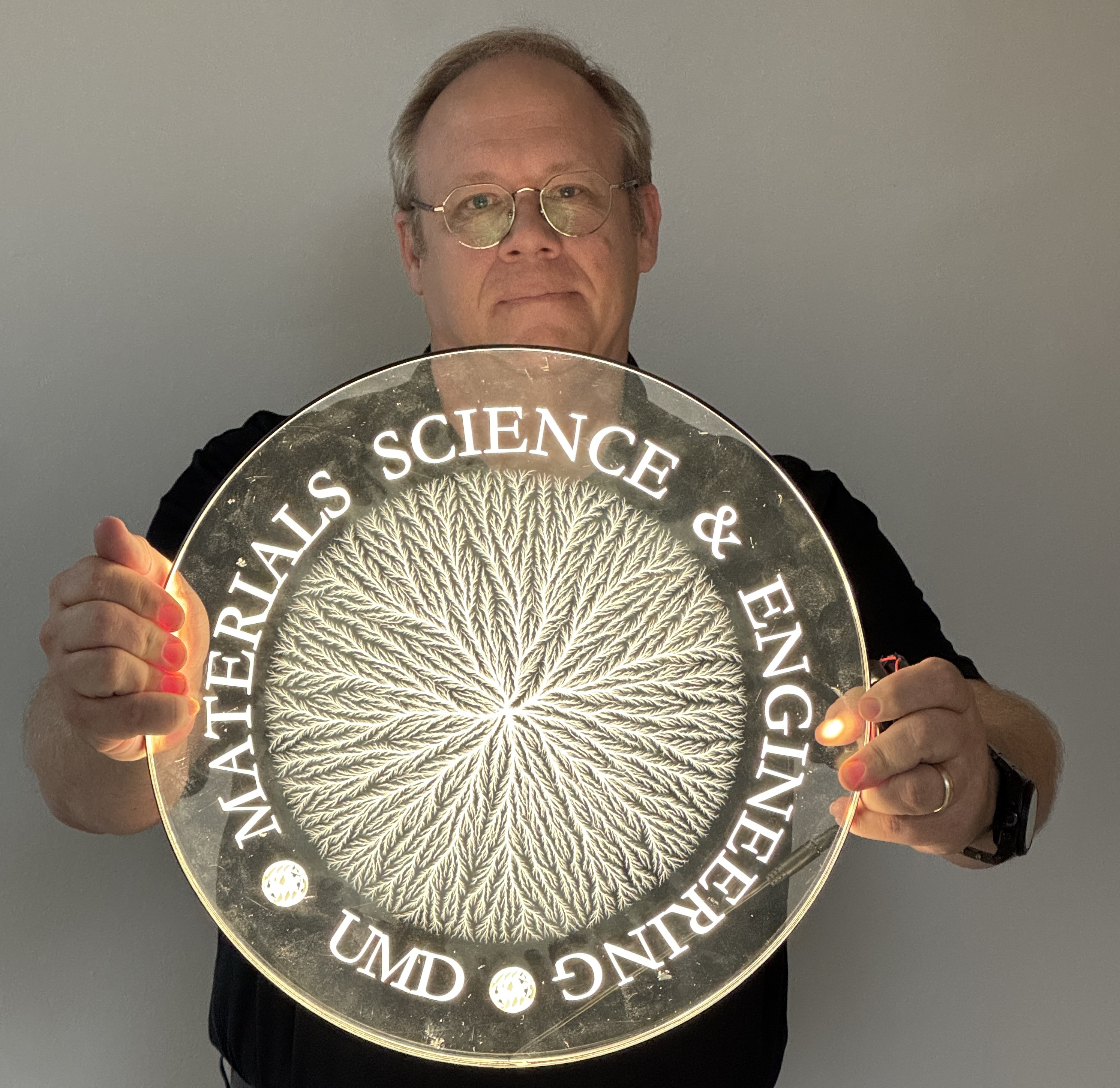
My group is also the first to show that SCIDB breakdown velocity is a balance between a space charge current limit and available electrostatic free energy and charge density, validated by a second, and again homebrew, novel breakdown streak-velocimeter. The combined high-speed velocity data coupled with the measured source impedance (yet another in-house developed instrument), also coupled with the dynamic PEA data, creates the amazing theoretical conclusion that the so-called discharge is rather a metallic-like breakdown layer in SCIDB. From this, we have developed a model, which is a departure from 60 years of community thinking and accepted theory! The breakdown event is NOT an expulsion of excess charge, rather an internal reconfiguration of charge to reduce the energy stored in the dielectric. We have a manuscript out for review in PRX that explains how the community has gotten it wrong all these years and share our first-principles model, and preponderance of supporting experimental data, of SCIDB which applies to all insulating materials.
Our work has unraveled decades-old mysteries about space charge induced dielectric breakdown, which threatens critical satellites necessary for most of modern life (telecom, weather monitoring, navigation, national defense, etc.). Our more complete understanding of SCIDB will enable efficient and reliable satellite designs which save industry and taxpayers untold sums on unexpected mission failures
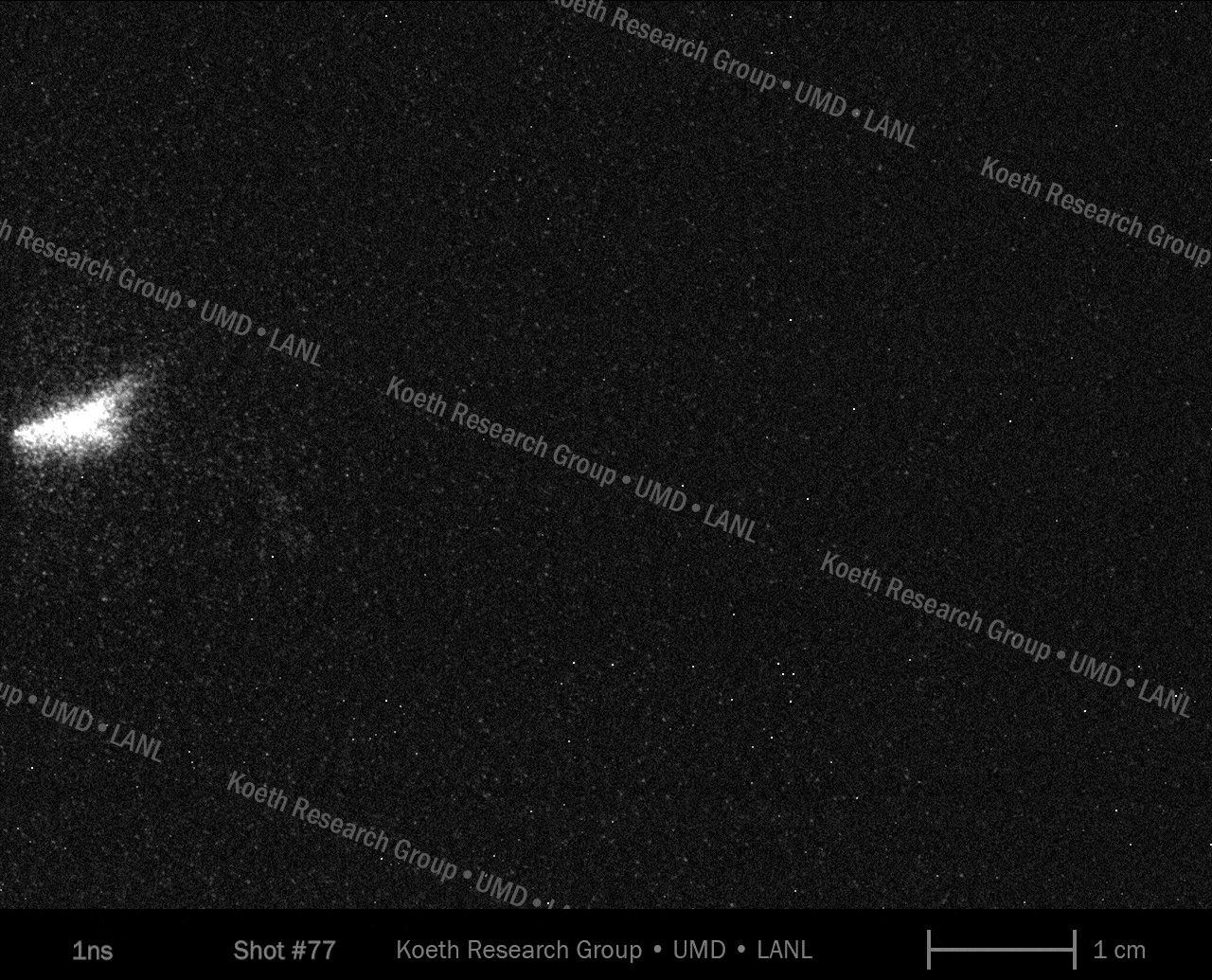
II. CERN's LHC CMS SRPD Detector. Heavy ion collisions (Pb-Pb) at the LHC CMS detector can occur in a variety of manners. They can be head on, peripheral, or somewhere in between. Each of these have an impact on the subsequent quark gluon plasma conditions. It is important to identify these characteristics of the collision. This is partially accomplished in the Zero Degree Calorimeter (ZDC) Spectator Reaction Plane Detector (SRPD). Neutrons and other neutrals from the collisions continue to travel straight from the interaction point with approximately the beam energy. Since they are neutral they are unaffected by the subsequent LHC bending magnets. The so-called spectator neutrons from the collision carry with them information about the dynamics of the collision. The SRPDs are comprised of an array of quartz blocks, and are located between the EM & hadronic sections of the ZDCs. Neutrons and other EM induced showers interact with the SRPD quartz elements and radiate due by Cherenkov Radiation. The subsequent light is captured by wavelength shifting fibers and transported to photomultiplier tubes. The radiation environment is harsh, quickly impacting the performance of the detector. At UMD, Koeth and his team in collaboration with the UMD Radiation Facilities are characterizing the radiation damage of these devices so as to calibrate for signal loss and to implement a design for a new radiation hard detector.
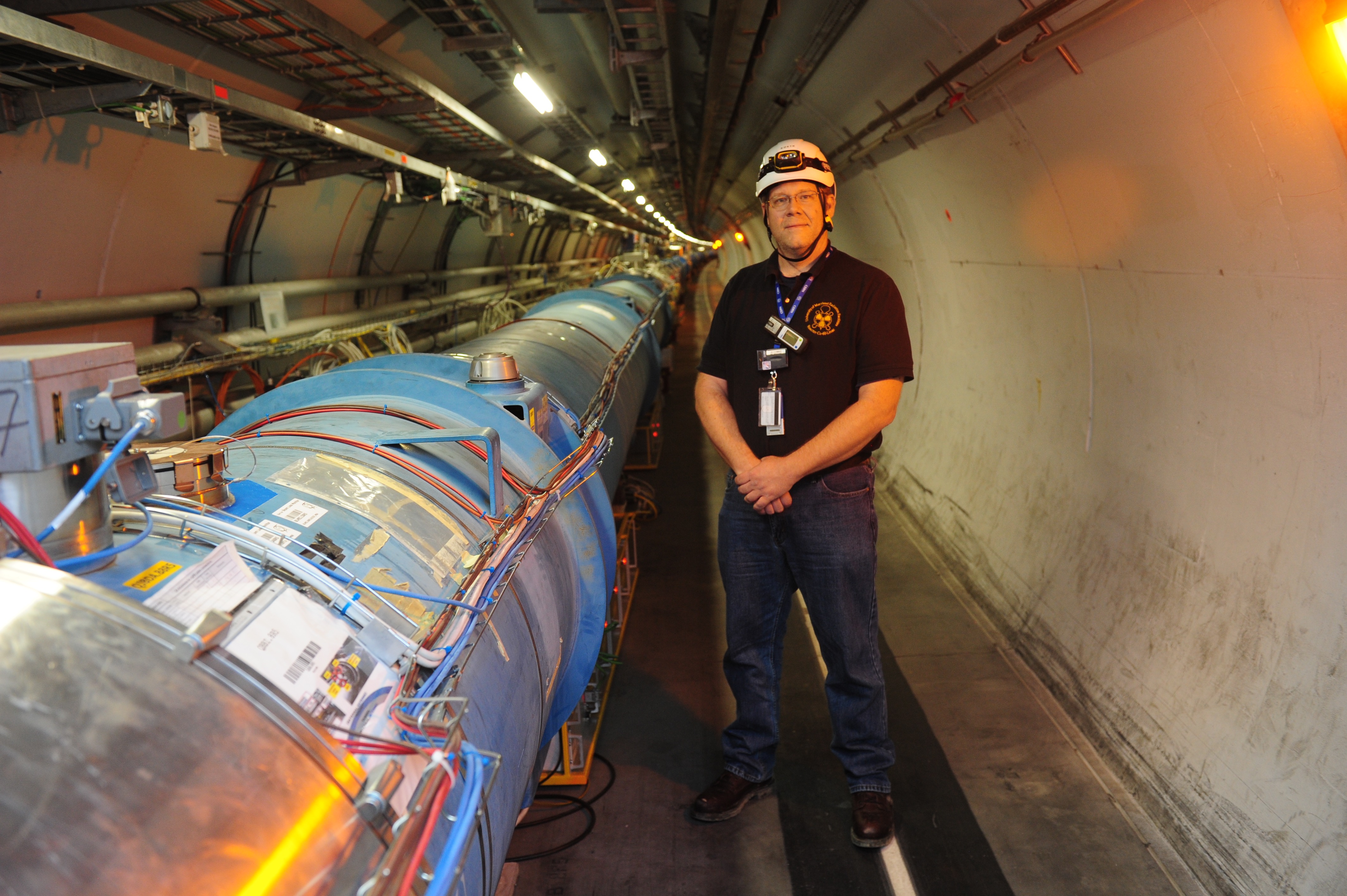
Additionally, we are investigating the slow-dose, long term radiation damage to polymers and paper products:
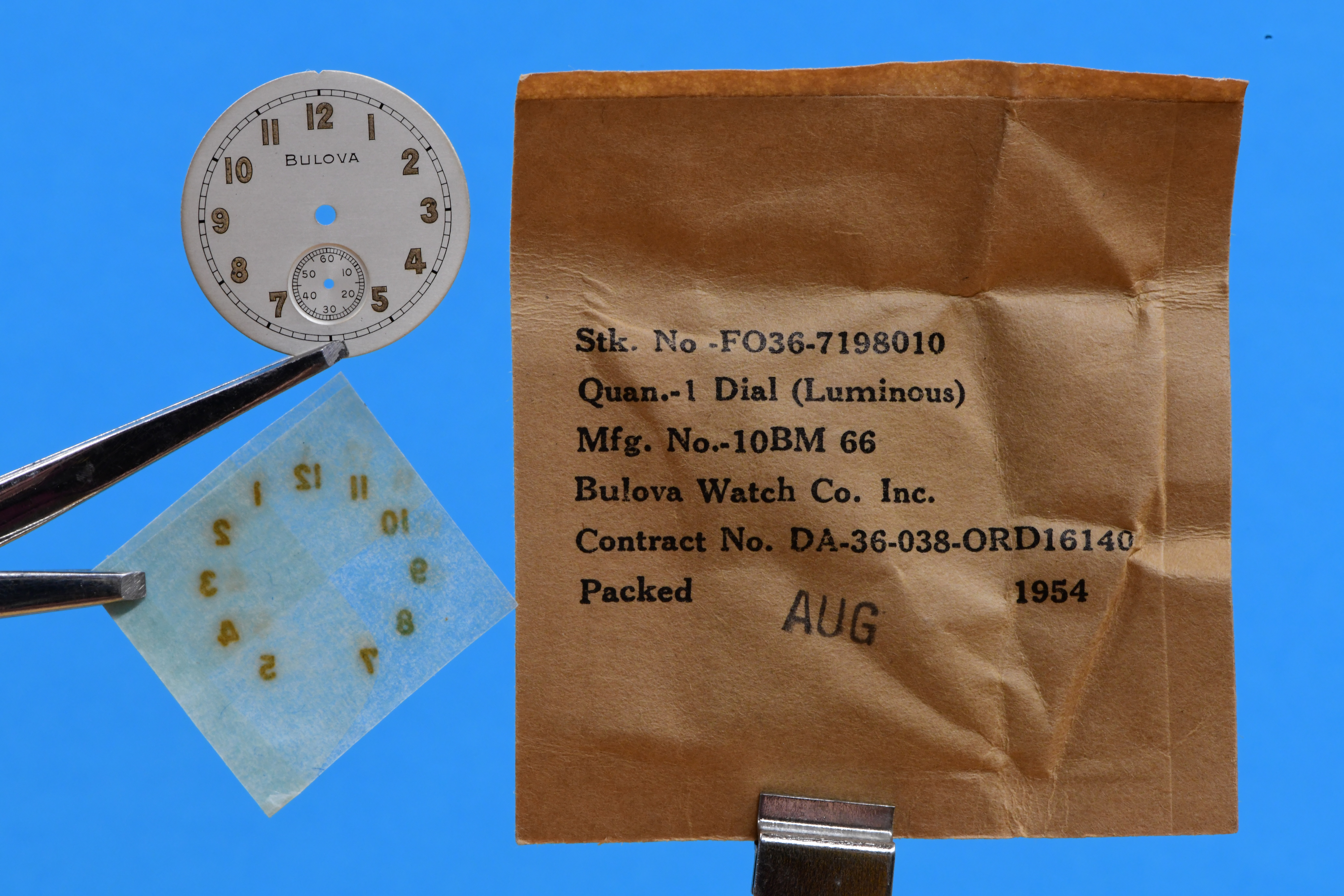
III. Neutron Imaging is in many ways the perfect complement to x-ray radiography. X-rays can "see" through soft material while not high-Z material such as lead. Neutron Imaging (AKA Neutron Radiography) has just the opposite ability. Neutrons can penetrate lead but are brought to halt in water and plastics. While X-ray systems are plentiful, neutron imaging systems are not. In 2015 Koeth and his team developed a neutron imaging station at the Maryland University Training Reactor, a 250 kW TRIGA reactor.
IV. FUND - Far Ultraviolet Neutron Detector. It is equally important to measure neutrons as it is to make them! Thermal neutron detection is critical to homeland security, oil logging industry, nuclear criticality facilities, and general nuclear research. The standard neutron detector for such applications consists of pressurized proportional detectors loaded with several atmospheres of expensive and rare 3He. In addition to the scarcity, 3He detectors require high voltage and are necessarily limited to cylindrical geometry, which is then subject to microphonics, shock, and sensitivity to variation in bias high voltage. 3He detectors are also gamma sensitive. This limits the quantity and subsequently the coverage area of detections systems (as opposed to large gamma ray detector arrays). Hence, there is strong motivation to develop alternative neutron sensing materials that can be used to replace 3He and used for large-scale deployment. Recent preliminary work by Michael Coplan, Tim Koeth, and their collaborators have developed scalable carbon substrates, including planar, cylindrical, and 3-D reticulated vitreous foams coated with isotopically enriched 10B immersed in a scintillating noble gas. The scintillation light is then collected by a UV sensitive PMT or SiPM. Koeth has proposed a new material solution that overcomes the present challenges. Unlike the 3He, our 10B coated based detectors are not limited to simple cylindrical geometry, rather they are scalable in both geometry and size and are insensitive to microphonics and do not require HV for primary operation.
V. The Cyclotron: For more than three decades Tim Koeth has been involved in an ongoing cyclotron project that has evolved into a one-of-a-kind instructional accelerator program. Initially started in his parent’s basement in the 1990s, moved to Rutgers University in 2000, and recently (2016) moved to UMD where it is the centerpiece of a Capstone Design class. For more information about the cyclotron please go to the cyclotron website. During the Covid pandemic our hands-on experimental capstone laboratory course was interupted. So as not to loose momentum, I set out to caputure the curriculum that had been created over the past five years or so with a set of YouTube videos. The first "season" includes nine episodes that detail the principles of acceleration and take a deep dive into how each of the major cyclotron subsystems work, and describe their role in the production of beam. The second season, now in production, focus on neutron production and subsequent experimental techniques that they enable. Please have a look at our YouTube channel: Cyclotrons!
VI. High Resolution Gamma Ray Spectroscopy using High Purity Germanium (HPGe) is a continuous project for Koeth. HPGe spectroscopy is an analytic technique to identity and quantify gamma emitting radionuclides. This has applications from environmental measurements to neutron activation analysis. I have been a gamma spectroscopist for over 25 years now.
VII. Mystery of the German Uranium Cube is a history of science project undertaken by Koeth and his Post-Doc Mimi Hiebert that is seeking to learn the meandering path a 5 pound block of natural uranium that landed in Koeth's hand's in 2013. Koeth and Hiebert have written an article in Physics Today and has since gained developed strong public interest in determining their origins and final disposition. On August 29th NPR's Morning Edition aired an interview with Koeth & Hiebert.
UNIVERSITY OF MARYLAND
- UMD ENMA300 Introduction to Materials Science & Engineeering, 3cr, Fall 2025, 2022, 2021, and Spring 2022
- UMDENMA486/688 Seminar in Materials Science & Engineering, 1cr, Fall 2024/2019 and Spring 2025, 2020
- UMD ENMA490 MSE Senior Design Capstone Class, 3cr, Spring 2023
- UMD ENMA499 Senior Laboratory Project in Materials Science & Engineering, 3cr, Spring 2025
- UMD HONR298J A Century of Smashing Atoms - an honors seminar where the genius of discovery is explored in the history of particle accelerators, 3cr, Spring 2019, 2020, 2021
- UMD ENMA422, Radiation Effects of Materials, 3cr, Fall 2017
- UMD EENE408T/PHYS499T/MSE489T Accelerator Physics - Capstone Design Project, 3cr, Spring 2016/2017/2018/2019/2020
- UMD ENME432, Reactor and Radiation Measurements Laboratory, 3cr Spring 2015, Fall 2015, Spring 2016, Fall 2016, Spring 2017
- UMD ENMA486,688, MSE Seminar Spring 2020
UNITED STATES PARTICLE ACCELERATOR SCHOOL (USPAS)
- Cyclotron Design, USPAS Winter 2017, UC Davis, 1.5cr (graduate level)
- Cyclotron Design, Operation, and Measurement, USPAS Summer 2015, Rutgers University, 3cr (graduate level)
- Cyclotron Design, USPAS Winter 2013, Duke University, 1.5cr (graduate level)
- Fundamentals of Accelerator Physics, USPAS Summer 2011, Stony Brook, 2011
- Radiation & Matter in Accelerator Environments – Summer 2019
Updated November 1, 2025
- “Periodic structures in electron-irradiated PMMA: implications for insulators in radiation hard environments,” N. R. Schwartz, B. C. Clifford, C. Chun, E. H. Frashure, K. M. Sturge, M. Wiratmo, N. Hoppis, H. Wilson, J. Fitzgibbon, E. Bassinger, B. L. Beaudoin, J. Cumings, and T. W. Koeth, accepted December 14, 2025, Journal of Applied Physics
- “Measurements of Fusion Yield of the Centrifugal Mirror Fusion Experiment,” John L. Ball, Shon Mackie, Jacob G. van de Lindt, Willow Morrissey, Artur. Perevalov, Zachary Short, Nicholas Schwartz, Timothy W. Koeth, Brian L. Beaudoin, Carlos A. Romero-Talamás, John Rice, R. Alex Tinguely, submitted to Nuclear Fusion, accepted on October 3, 2025, https://arxiv.org/abs/2505.23047#
- "Half-life Measurements of Highly Charged Radioisotopes by Nuclear Recoil in a Penning Trap." Scott Moroch, Carolyn Chun, Doug VanDerwerken, Ariana Shearin, Brian L. Beaudoin, Klaus Blaum, and Timothy W. Koeth, Physical Review Research, 7, 033226, Published September 5, 2025, DOI: https://doi.org/10.1103/cv2g-c39p
- “Electrically insulating materials for centrifugal mirrors” Nick R. Schwartz, Carlos A. Romero-Talamás, Marlene I. Patino, Daisuke Nishijima, Matthew J. Baldwin, Russel P. Doerner, Artur Perevalov, Nathan Eschbach, Zachary D. Short, John Cumings, Ian G. Abel, Brian Beaudoin, Timothy W. Koeth, Journal of Nuclear Materials, Volume 615, September 2025, 155957 https://doi.org/10.1016/j.jnucmat.2025.155957
- “Characterization of electrostatic discharge currents in electron-charged polymethyl methacrylate as a proxy for natural compact intracloud discharges,” K.M. Sturge, N. Hoppis, A.M. Shearin, B.L. Beaudoin, B.C. Clifford, J.R. Fitzgibbon, E.H. Frashure, J.E. Krutzler, A.A. Levitan, P. O’Shea, H.J. Wilson, T.W. Koeth, Phys. Rev. E 111, 065207 – Published 13 June, 2025, DOI: https://doi.org/10.1103/m62y-7lf8
- “Myths of nuclear graphite in World War II, with original translations” Patrick J Park, S. Herzele, Timothy W. Koeth, EPJ H 50, 11 (2025). https://doi.org/10.1140/epjh/s13129-025-00098-7
- “Simulation and Modeling of Prompt Electrical Tree Formation During Dielectric Breakdown in Space-Charged Dielectrics” Montano, Thomas & Chun, Carolyn & Sturge, Kathryn & Hoppis, Noah & Shearin, Ariana & Hannan, José & Koeth, Timothy. (2025). Simulation and Modeling of Prompt Electrical Tree Formation During Dielectric Breakdown in Space-Charged Dielectrics. IEEE Transactions on Dielectrics and Electrical Insulation. PP. 1-1. 10.1109/TDEI.2025.3550102
- “Dynamics of high-speed electrical tree growth in electron-irradiated polymethyl methacrylate” Kathryn M. Sturge, Noah Hoppis, Ariana M. Bussio, Jonathan Barney, Brian Beaudoin, Cameron Brown, Bruce Carlsten, Carolyn Chun, Bryson C. Clifford, John Cumings, Nicholas Dallmann, Jack Fitzgibbon, Emily H. Frashure, Ashley E. Hammell, José Hannan, Samuel L. Henderson, Miriam E. Hiebert, James Krutzler, Joseph Lichthardt, Mark Marr-Lyon, Thomas Montano, Nathan Moody, Alexander Mueller, Patrick O’Shea, Ryan Schneider, Karl Smith, Bryce Tappan, Clayton Tiemann, David Walter, and Timothy W. Koeth. Science, 18 Jul 2024, Vol 385, Issue 6706, pp. 300-304, DOI: 10.1126/science.ado5943
- “Incident Beam Current Impact on Space-Charge Retention in Electron Dynamitron Irradiated Polymethyl Methacrylate” Kathryn M. Sturge, Noah Hoppis, Aneesh Anandanatarajan, Ariana M. Bussio, Bryson C. Clifford, Emily H. Frashure, Miriam E. Hiebert, James E. Krutzler; Timothy W. Koeth. Applied Physics Letters – Materials. 12, 031119
- “Imaging High Jitter, Very Fast Phenomena: A Remedy for Shutter Lag” Noah Hoppis, Kathryn M. Sturge, Jonathan E. Barney, Brian L. Beaudoin, Ariana M. Bussio, Ashley E. Hammell, Samuel L. Henderson, James E. Krutzler, Joseph P. Lichthardt, Alexander H. Mueller, Karl Smith, Bryce C. Tappan, Timothy W. Koeth. Review of Scientific Instruments, 94(12) 125109 (2023). DOI: 10.1063/5.0168764
- “Optical transmission characterization of fused silica materials irradiated at the CERN Large Hadron Collider” S. Yang, A. Tate, R. Longo, M. Sabate Gilarte c, F. Cerutti c, S. Mazzoni c, M. Grosse Perdekamp a, E. Bravin c, Z. Citron, B. Kühn, F. Nürnberg, B. Cole, J. Fritchie, I.Gelber, M. Hoppesch, S. Jackobsen, T. Koeth, C. Lantz, D. MacLean, A. Mignerey, M. Murray, M. Palm, M. Phipps, S. Popescu, N. Santiago, S. Shenkar, Steinberg i, Nuclear Instruments and Methods in Physics Research, A, 7 July 2023, https://doi.org/10.1016/j.nima.2023.168523
- “22Na activation level measurements of fused silica rods in the LHC target absorber for neutrals compared to simulations” S. Yang, M. Sabate Gilarte, A. Tate, N. Santiago, R. Longo, S. Mazzoni, F. Cerutti, E. Bravin3, M. Grosse Perdekamp, G. Lerner, D. Prelipcean, Z. Citron, B. Cole, S. Jackobsen, M. D. Kaminski, T. Koeth, C. Lantz, D. MacLean, A. Mignerey, M. Murray, M. Palm, M. Phipps, P. Steinberg, and A. Tsinganis, Physical Review Accelerators and Beams 25, 091001 (2002), DOI: 10.1103/PhysRevAccelBeams.25.091001
- “Space-charge effects in low-energy flat-beam transforms,” Scott B. Moroch, Timothy W. Koeth, Bruce E. Carlsten, Journal of Physics Communication, 6 085005 (2022). DOI: 10.1088/2399-6528/ac7d37
- Invited: “Tracking the Journey of a Uranium Cube,” T. W. Koeth, M. E. Hiebert, Physics Today, 72 (5) 36-43 (2019). DOI: 10.1063/PT.3.4202
- “Multi-Stream Instability of a Single Long Electron Bunch In a Storage Ring,” B. Beaudoin, I. Haber, R. A. Kishek, T. W. Koeth, T. M. Antonsen Jr., Physics of Plasmas, Accepted: April 18, 2019. DOI: 10.48550/arXiv.1901.05987
- “Single-invariant nonlinear optics for a small electron recirculator,” K. Ruisard, H. B. Komkov, B. Beaudoin, I. Haber, D. Matthew, T. Koeth, Physical Review Accelerators and Beams 22 041601 (2019) DOI:10.1103/PhysRevAccelBeams.22.041601
- ““Quadrupolar mode measurements for space charge dominated beams,” William D. Stem, Brian L. Beaudoin, Irving Haber, and Timothy W Koeth, Physics of Plasmas, Accepted April 23, 2018. DOI: 10.1063/1.5026677
- Invited: “Long-path-length experimental studies of longitudinal phenomena in intense beams,” B. Beaudoin, I. Haber, R. A. Kishek, S. Bernal, and T.W. Koeth, Physics of Plasmas, 23(5) 056701 (2016). DOI: 10.1063/1.4943522
- “Demonstration of neutron detection utilizing open cell foam and noble gas scintillation,” C.M Lavelle, M. Coplan, E.C. Miller, A.K. Thompson, A.L. Kowler, R.E. Vest, A.T. Yue, T.W. Koeth, M. Al-Sheikhly, C.W. Clark, Applied Physics Letters, 106(9) 094103 (2015). DOI: 10.1063/1.4914001
- Invited: “Undergraduate Education with the Rutgers 12-Inch Cyclotron” Timothy W. Koeth, CAARI2014, Physics Procedia, Volume 66, June 2015, Pages 622-631, http://www.sciencedirect.com/science/article/pii/S1875389215002369
- Invited: “Modeling HIF relevant longitudinal dynamics in UMER,” B. Beaudoin, S. Bernal, C. Blanco, I. Haber, R.A. Kishek, T. Koeth, and Y. Mo, Nuclear Instruments and Methods A, 733 178-181 (2014). DOI: 10.1016/j.nima.2013.05.077
- Invited: “The University of Maryland Electron Ring program,” R.A. Kishek, B. Beaudoin, S. Bernal, M. Cornacchia, D. Feldman, R. Fiorito, I. Haber, T. Koeth, Y. Mo, P.G. O'Shea, K. Poor Rezaei, D. Sutter, and H. Zhang, Nuclear Instruments and Methods A, 733 233-237 (2014). DOI: 10.1016/j.nima.2013.05.062
- “Longitudinal confinement and matching of an intense electron beam,” B. Beaudoin, I. Haber, R.A. Kishek, S. Bernal, T. Koeth, D. Sutter, P.G. O.Shea, and M. Reiser," Physics of Plasmas, 18 013104 (2011). DOI: 10.1063/1.3537820
- “Smooth approximation model of dispersion with strong space charge for continuous beams,” S. Bernal, B. Beaudoin, T. Koeth, P. G. O’Shea, Physical Review Special Topics - Accelerators & Beams, 14 104202 (2011). DOI: 10.1103/PhysRevSTAB.14.104202
- “First observation of the exchange of transverse and longitudinal emittances,” J. Ruan, A. H. Lumpkin, A. S. Johnson, R. Thurman-Keup, H. Edwards, R.P. Fliller, T. W. Koeth, and Y.-E Sun, Physics Review Letters, 106 233801 (2011). DOI: 10.1103/PhysRevLett.106.244801
- “Superconducting cavity driving with FPGA controller,” T. Czarski, W. Koprek, K. T. Pozniak, R. S. Romaniuk, S. Simrock, A. Brandt, B. Chase, R. Carcagno, G. Cancelo, T. Koeth, Nuclear Instruments and Methods A, 568(1) 854-862 (2006). DOI: 10.1016/j.nima.2006.07.063
- “Demonstration of 4H-SiC visible-blind EUV and UV detector with large detection area,” X. Xin, F. Yan, T. W. Koeth, C. Joseph, J. Hu, J. Wu, J.H. Zhao, Electronic Letters, 41(21) 1192-1193 (2005). DOI: 10.1049/el:20052977
- “The effect of highly ionizing particles on the CMS silicon strip tracker,” W. Adam et al., Nuclear Instruments and Methods in Physics Research Section A, 543(2-3) 463-482 (2005). DOI: 10.1016/j.nima.2004.11.049
- “New results on diamond pixel sensors using Atlas frontend electronics,” M. Keil et al., Nuclear Instruments and Methods in Physics Research Section A: Accelerators, Spectrometers, Detectors and Associated Equipment, 501(1) 153-159 (2003). DOI: 10.1016/S0168-9002(02)02025-9
- “Status of the R&D activity on diamond particle detectors,” W. Adam et al., Nuclear Instruments and Methods in Physics Research Section A: Accelerators, Spectrometers, Detectors and Associated Equipment, 511(1-2) 124-131 (2003). DOI: 10.1016/S0168-9002(03)01777-7
- “CVD diamond pixel development,” R. Stone, et al., IEEE Transactions on Nuclear Science, 49 1059-1062 (2002). DOI: 10.1109/TNS.2002.1039614
- “Beam test results of the US-CMS forward pixel detector,” M. Atac et al, Nuclear Instruments and Methods in Physics Research Section A: Accelerators, Spectrometers, Detectors and Associated Equipment, 488(1-2) 271-281 (2002). DOI: 10.1016/S0168-9002(02)00472-2
- “The development of diamond tracking detectors for the LHC,” RD42 Collaboration, W. Adam et al., Nuclear Instruments and Methods in Physics Research Section A: Accelerators, Spectrometers, Detectors and Associated Equipment, 514(1-3) 79-86 (2003). DOI: 10.1016/j.nima.2003.08.086
- “Radiation tolerance of CVD diamond detectors for pions and protons,” W. Adam et al., Nuclear Instruments and Methods in Physics Research Section A: Accelerators, Spectrometers, Detectors and Associated Equipment, 476(3) 686-693 (2002). DOI: 10.1016/S0168-9002(01)01666-7
- “Performance of irradiated CVD diamond micro-strip sensors,” W. Adam et al., Nuclear Instruments and Methods in Physics Research Section A: Accelerators, Spectrometers, Detectors and Associated Equipment, 476(3) 706-712 (2002). DOI: 10.1016/S0168-9002(01)01671-0
- “Diamond Pixel Detectors,” Adam, et al., Nuclear Instruments and Methods in Physics Research Section A: Accelerators, Spectrometers, Detectors and Associated Equipment, 465(1) 88-91 (2001). DOI: 10.1016/S0168-9002(01)00358-8
- “Micro-strip sensors based on CVD diamond,” Adam, et al., Nuclear Instruments and Methods in Physics Research Section A: Accelerators, Spectrometers, Detectors and Associated Equipment, 453(1–2) 141-148 (2000). DOI: 10.1016/S0168-9002(00)00620-3